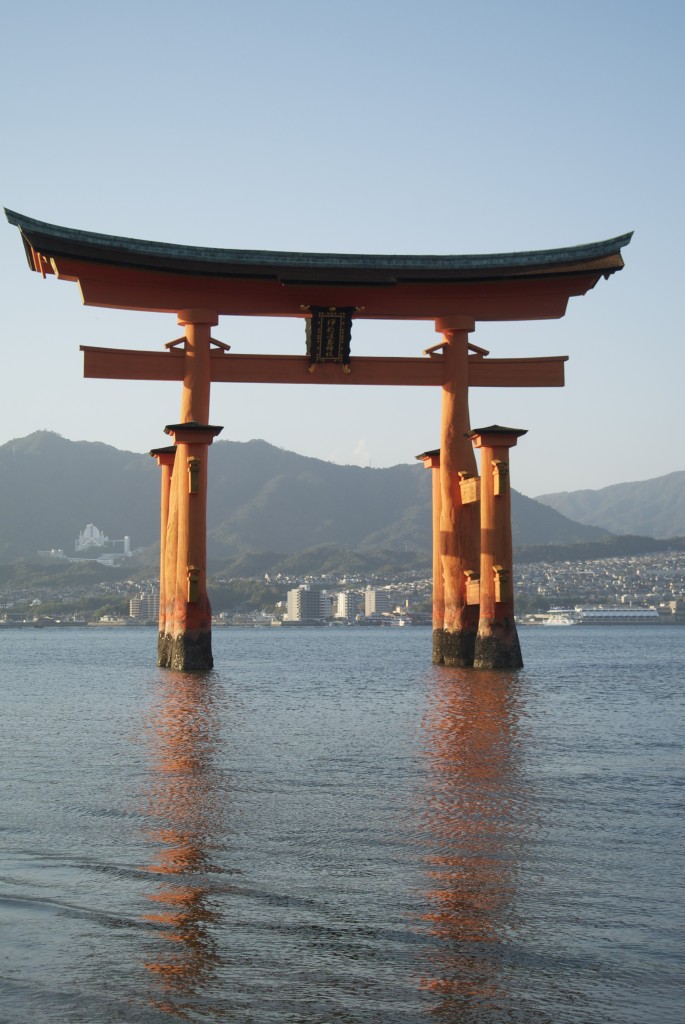
Otorii at low tide, taken from just a few meters away with the shallow water reflecting its giant vermilion pillars. (All photos by John Dougill)
Itsukushima Jinja is Japan’s premier World Heritage shrine. Inscribed by Unesco in 1996, it was cited for ‘setting traditional architecture of great artistic and technical merit against a dramatic natural background and thereby creating a work of art of incomparable physical beauty’.
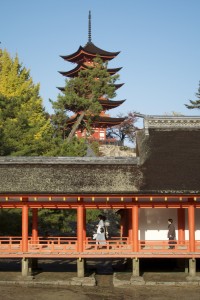
The Shinto shrine’s villa-style corridor, with the tide out and Buddhist pagoda behind
According to shrine tradition it was founded in 583, though there’s no evidence for its existence until the early ninth century. But as far as the present layout is concerned, it dates back to 1168 when the samurai leader Taira no Kiyomori invested in a prestigious complex styled after the aristocratic villas of Kyoto. The reason? Well, guidebooks suggest that Kiyomori ascribed his military victories to the kami of Itsukushima, but Joseph Cali in Shinto Shrines goes a bit further…
It’s said that after Taira no Kiyomori was placed in charge of Aki Province (part of present-day Hiroshima), he often visited the existing shrine and he had a dream of an old monk who told him that if he established a shrine here himself, he would achieve control of the country. He ordered buildings to be constructed and Itsukushima was considered the family shrine of the Taira from around that time.
Kiyomori also donated thirty-three scrolls of Buddhist sutra to the shrine, some of which can be seen in the shrine’s treasury. The huge complex was a typical Buddhist-Shinto mélange run by Buddhist priests, which the Meiji ideologues of the late nineteenth century found difficult to separate. Though they destroyed some structures and moved others, the World Heritage citation is not limited to the Shinto shrine but includes neighbouring Buddhist features such as a five-storey and a two-storey pagoda.
There are plenty of websites with good information about Itsukushima, including this Unesco one which explains the reasons for the World Heritage status. Meanwhile, here are some other key points:
* Miyajima – the island on which Itsukushima stands – was a divine island in ancient times, with a sacred mountain (Mt Misen) and lush forest suggestive of the abode of the kami. Still today Mt Misen primeval forest covers 14% of the island, and taboos exist about birth and burials on the island.
* The shrine is brilliantly located so as to appear on land at low tide while floating on the sea at high tide. It really needs to be visited twice, because it’s tantamount to two different shrines, or one shrine in two guises.
* The great torii set in the sea is 16 meters high, weighs about 60 tons, and its two big pillars were made of camphor trees between 500 and 600 hundred years old. It was intended as the entranceway for pilgrims coming by boat. The vermilion, taken from China, not only protects the wood but was thought to drive away evil.
* There are three theories I’ve come across as to why the shrine was built on the sea. One is an attempt to recreate the mythical Dragon Palace, because the enshrined kami (the three Munakata sisters) are goddesses of the sea. Another theory has to with the Buddhist paradise, which is separated by a stretch of water from this world (Kiyomori’s design was done at a time when there was a fashion for Pure Land recreations, such as Byodo-in). Yet a third idea is that it was taboo for anyone to set foot on the divine island of Miyajima so as not to pollute it, so the shrine was set on the sea to act as a liminal space between the profane and the sacred.
* The shrine’s location in the sea created some unique problems for the designers, and some unique solutions, such as gaps in the corridor floor so as to relieve the pressure from the rising water beneath.
* The shrine has the only Noh stage in the world to stand in the sea. Noh stages usually have a pot for acoustic effect below the stage, but here the floorboards have to carry the acoustic resonance themselves.
* The deer make the ones at Nara look positively wild. I’ve never seen deer so domesticated, almost as if they’re begging to be petted.
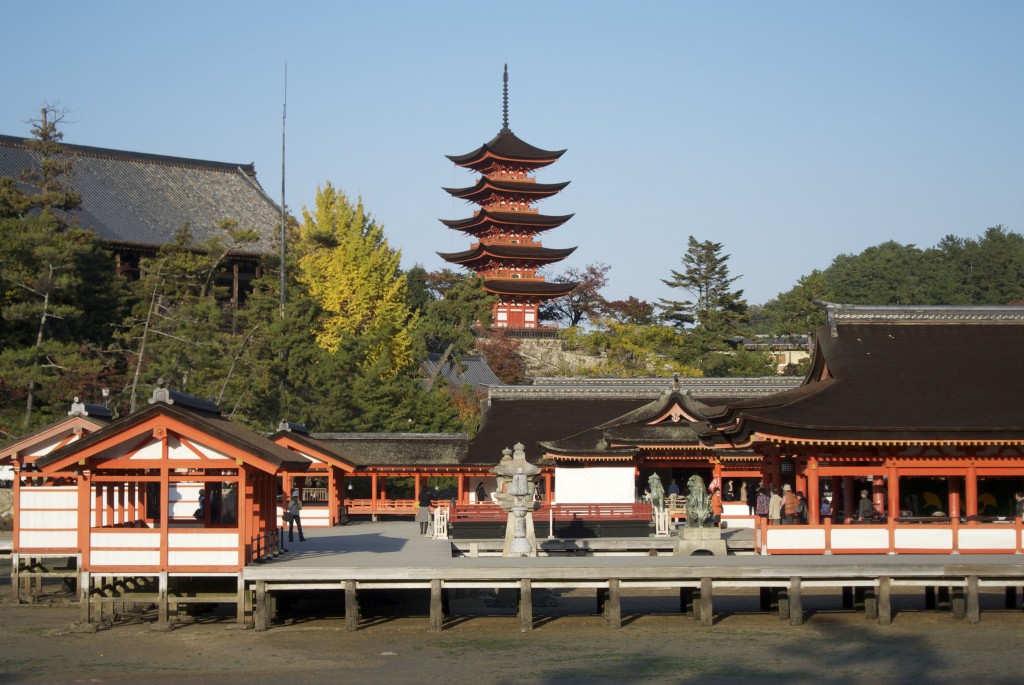
Shinto shrine with Buddhist pagoda behind
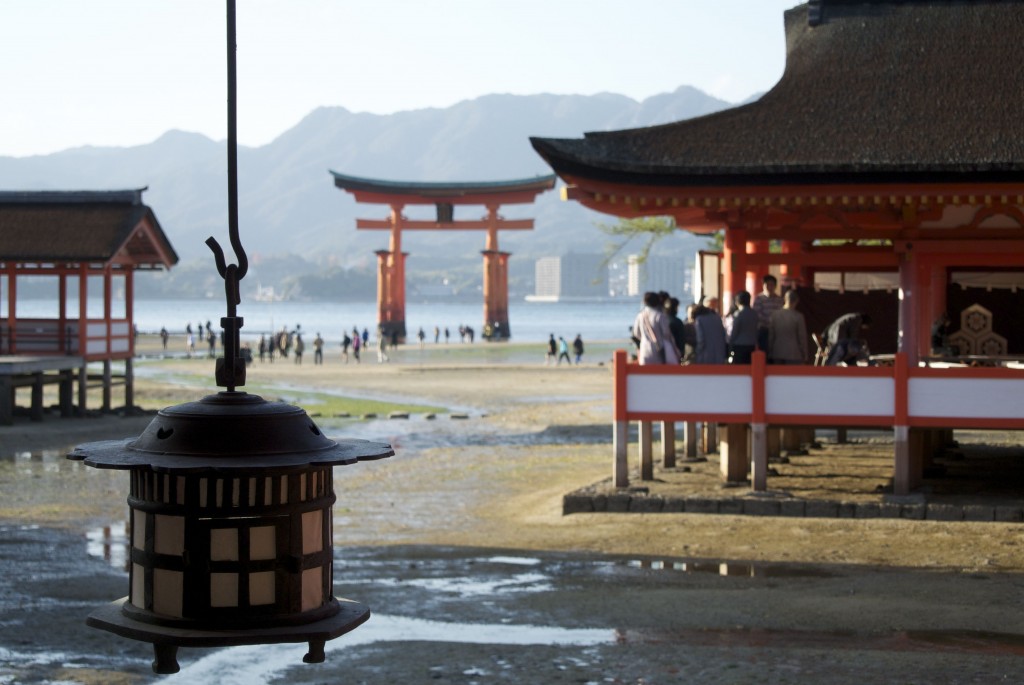
The shrine at low tide
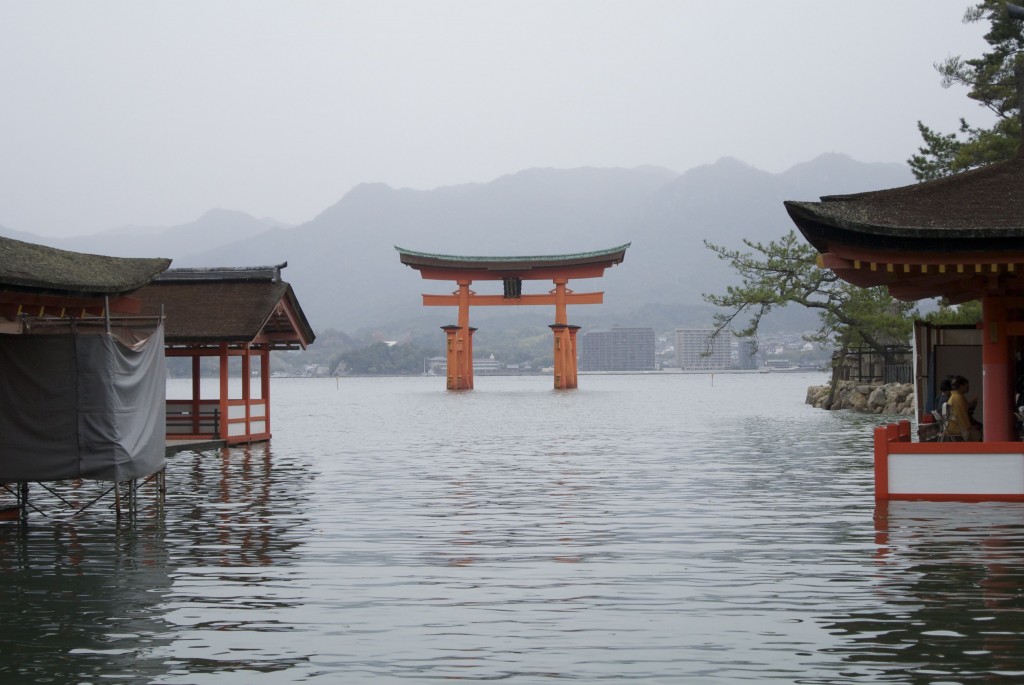
The shrine at full tide presents a quite different picture
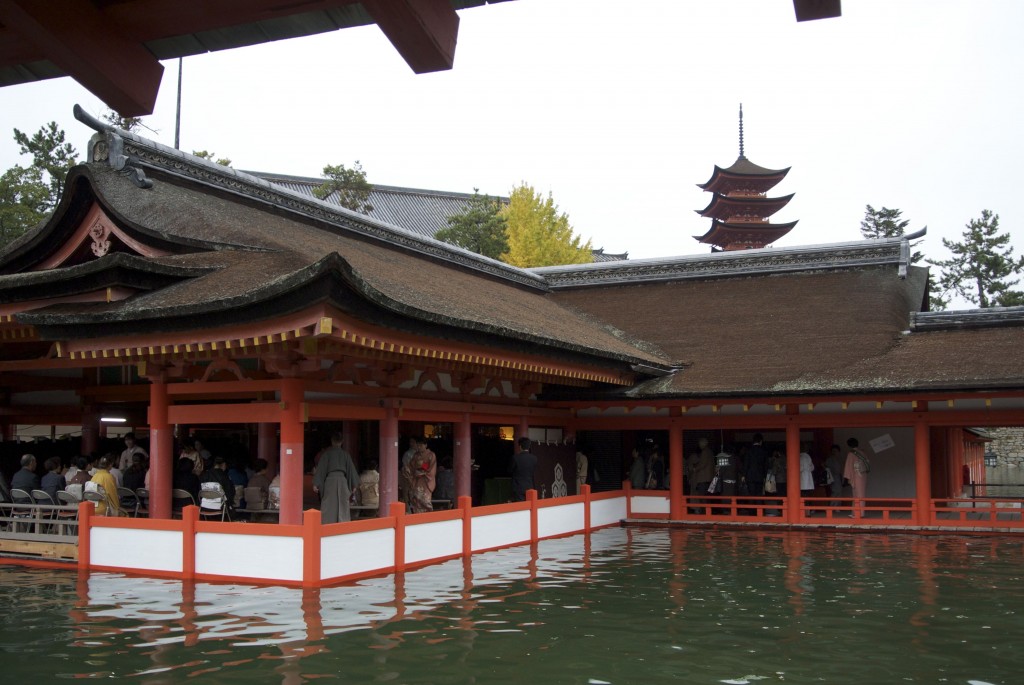
The full tide seems as if it’s about to flood the shrine; brinkmanship architecture at its best.
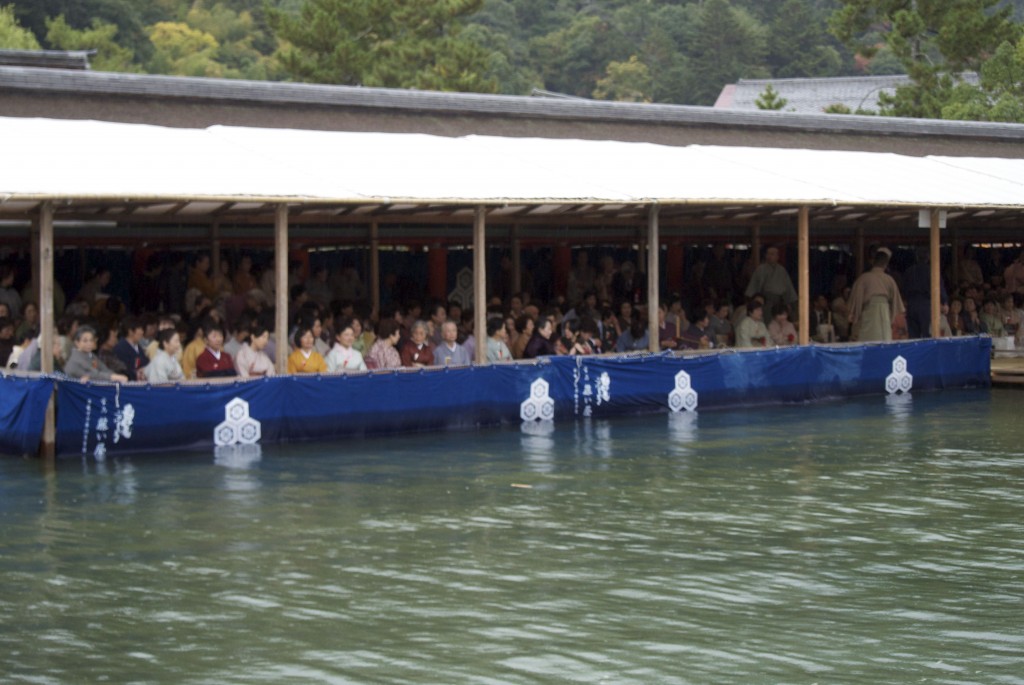
The shrine packed for a celebration of tea by the Urasenke school, and the audience look as if they are afloat as they await eagerly the offering of sacramental tea to the kami.
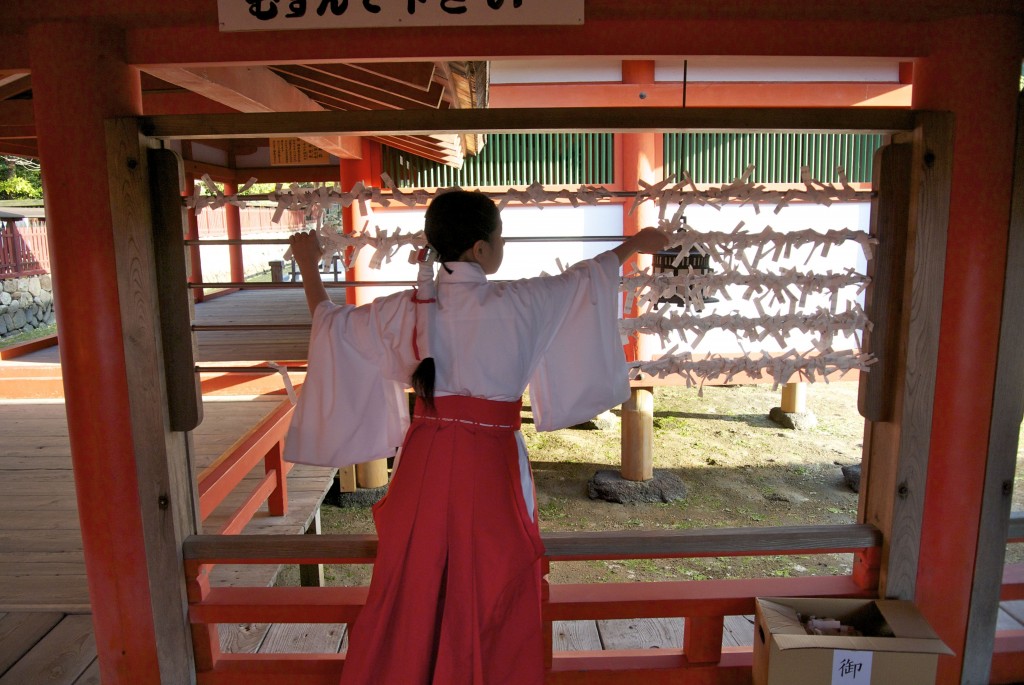
A miko arranges the fortune slips, aesthetically displayed as if in a window onto a different world. Look carefully and you can tell that the tide is out.
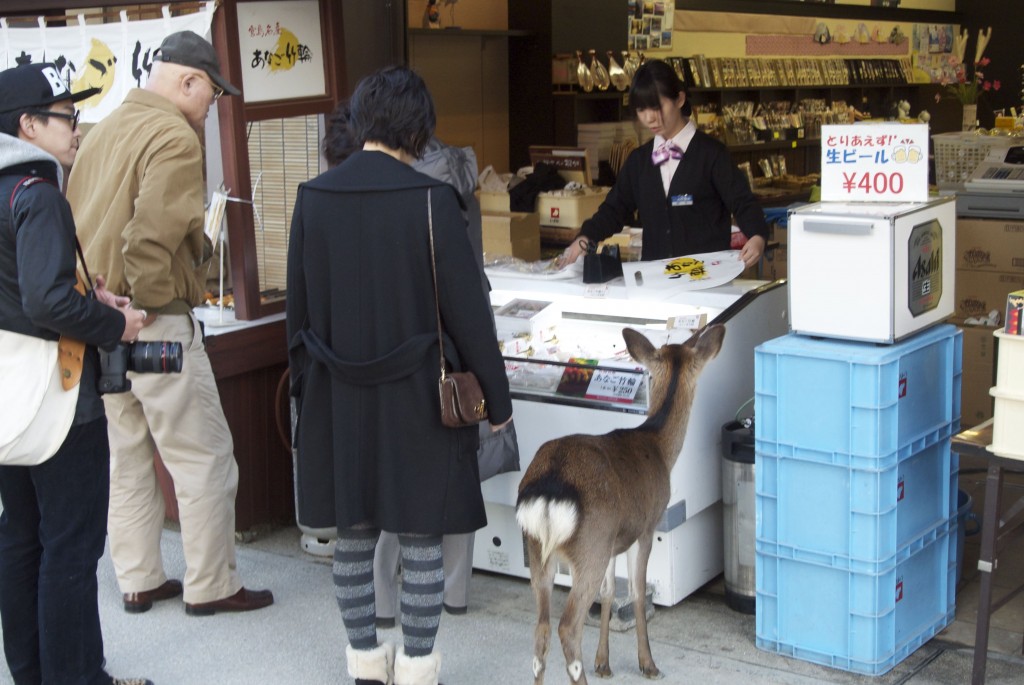
The deer at Miyajima are so civilised that they even queue up at shops. It’s said they live a salaryman lifestyle, retreating to the woods at night and commuting by day to eke out a liviing from the tourists.

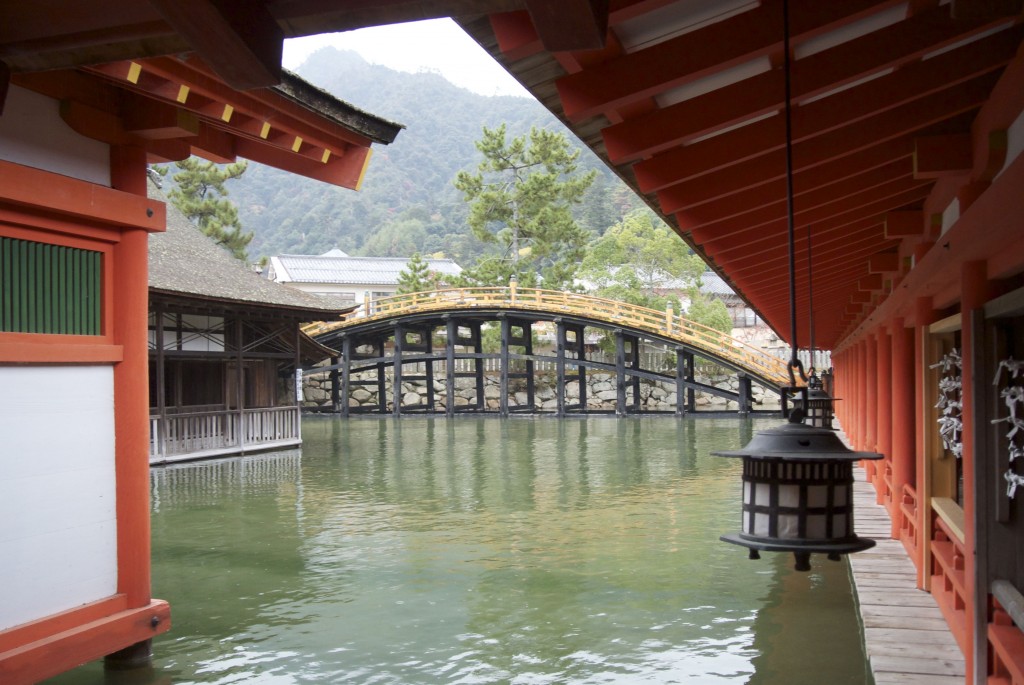
Leave a Reply